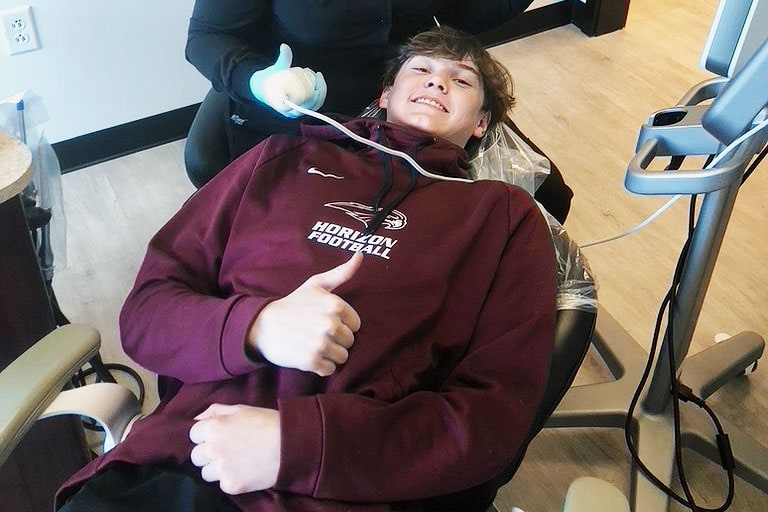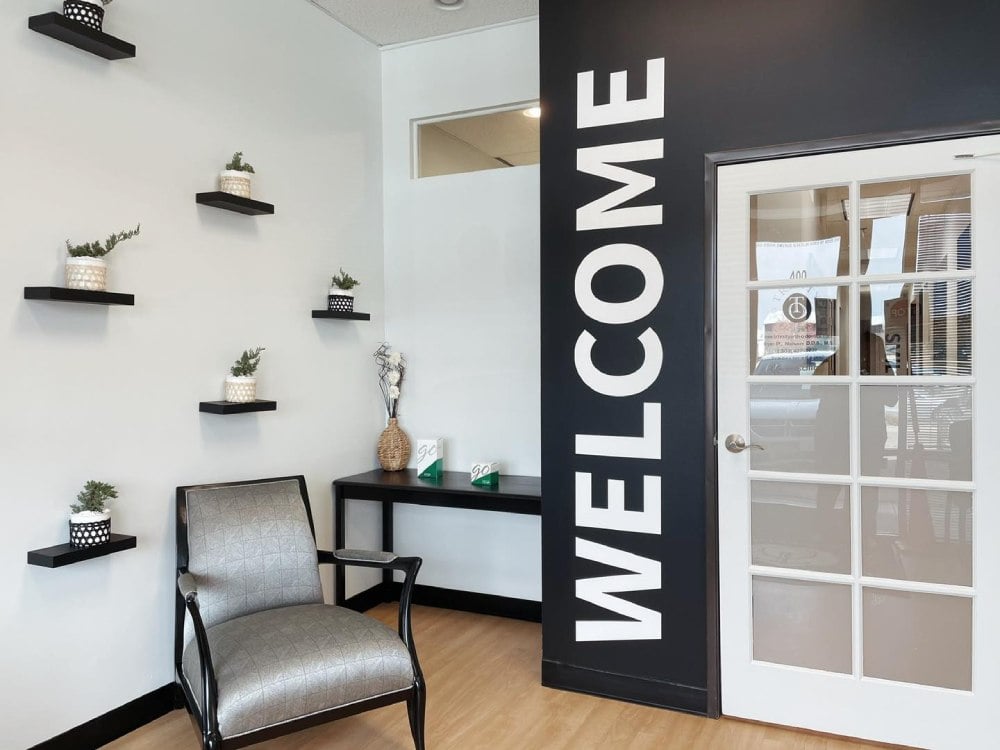Getting braces is a rite of passage for many children. While orthodontists say about 45% of people need braces, the age they need them, length of treatment, and method will vary.
The best way to determine whether your child could benefit from orthodontic work is to schedule an evaluation. Regardless of the number of permanent teeth they have, the American Association of Orthodontists recommends kids begin getting check-ups at age 7. Even if your kids are teenagers, though, it’s not too late to get started.
The most common reasons an orthodontist will recommend orthodontics for a child or teenager is to correct tooth crowding or jaw misalignment. If left untreated, these conditions can impact the ability to chew or talk and make it difficult to keep teeth clean and healthy.
The challenges of traditional braces for young people
Despite the benefits of braces, children of any age may be resistant because they are concerned about how braces will look or are worried about the discomfort of having something bulky and permanent stuck to their teeth.
Braces can also make it difficult to floss and care for teeth, putting kids with poor brushing habits at risk of cavities. If teeth aren’t kept clean of bacteria and food particles, a permanent ring around the braces bracket can develop, leading to the need for additional dental work after braces are removed.
Additionally, parents may be concerned about the time and financial investment braces require.
Invisalign for children and teens
Fortunately, with advancements in orthodontic technology, Invisalign is considered a safe and effective alternative to traditional braces for children with mild to moderate misalignments. Orthodontists with advanced Invisalign expertise can treat even difficult cases with Invisalign, and alleviate the need for bulky appliances that typically precede braces in kids’ treatment.
“Aligners are clear, thin, plastic-like trays, making them virtually invisible and allowing an individual to inconspicuously achieve a straight smile,” according to the AAO. “Tooth colored attachments are frequently placed on the teeth to help guide the teeth into place. Aligners are designed to minimize the appearance of the appliance to better fit any lifestyle.”
One of the biggest benefits of Invisalign is that the aligners are removable, allowing a person to remove them to eat, brush, and floss. This benefit is especially important for young people, as it lowers their risk of tooth decay while having their teeth realigned.
“The key responsibility is wearing them as prescribed,” according to the AAO. “That typically means a minimum of 22 hours a day and in the correct sequence.”
Children of all ages who use the Invisalign system need to be taught how to care for their aligners and cautioned against removing them for anything besides eating and brushing. They would also need to be trained on how to keep track of their aligners to avoid losing or breaking them.
The average length of Invisalign treatment is 12 to 16 months, according to Trinity Orthodontics, early phase treatment in children can often be accomplished in 6-8 months. Treatment time and outcome can be affected by how experienced the orthodontist is treating kids with Invisalign and how compliant the child is during treatment.
Dr Bryan Nelson of Trinity Orthodontics is the top Invisalign provider in the Rocky Mountain Region.
For more information about Invisalign for your kids and teenagers or to request an initial consultation, visit contact our team today.




